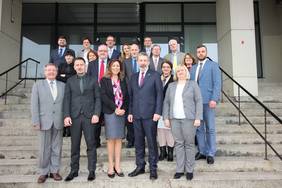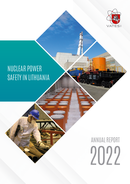9 October 2017 International Atomic Energy Agency (IAEA) starts two-week (9-20 October) International Physical Protection Advisory Service (IPPAS) mission in Lithuania. Mission is to review the legislative and regulatory framework for nuclear security as well as the physical protection of nuclear material and facilities, including computer security.
„It is the third IPPAS mission since Lithuania re-established its independence. We expect that insights and experience of international experts will allow us to assess the current regime, identify our progress in this area and the fields that firstly need to be improved. The field of computer security of nuclear facilities in Lithuania will be evaluated for the first time,” said Michail Demčenko, Head of State Nuclear Power Safety Inspectorate (VATESI).
This IPPAS mission is a full scope and covers all five modules. IPPAS mission objectives is to review the current status of the Lithuania physical protection regime. The review will cover nuclear security-related legislative and regulatory framework for nuclear and other radioactive material and associated facilities, as well as security arrangements for the transport of nuclear and other radioactive material and for computer security.
During the mission, IPPAS team members will interview representatives from VATESI, Radiation Protection Centre, State Security Department, Ministry of Internal Affairs and associated institutions, Ministry of Defence. Also experts will visit SE Ignalina Nuclear Power Plant, SE Radioactive Waste Management Agency (RATA), Hospital of Lithuanian University of Health Sciences (LSMU) Kaunas clinics and JSC Polimaster.
The first IPPAS mission was performed in 1999, follow-up mission in 2002. During these missions, recommendations and suggestions were provided and changes in the legal framework of physical protection regime and security arrangements at nuclear facilities and nuclear materials were evaluated.








